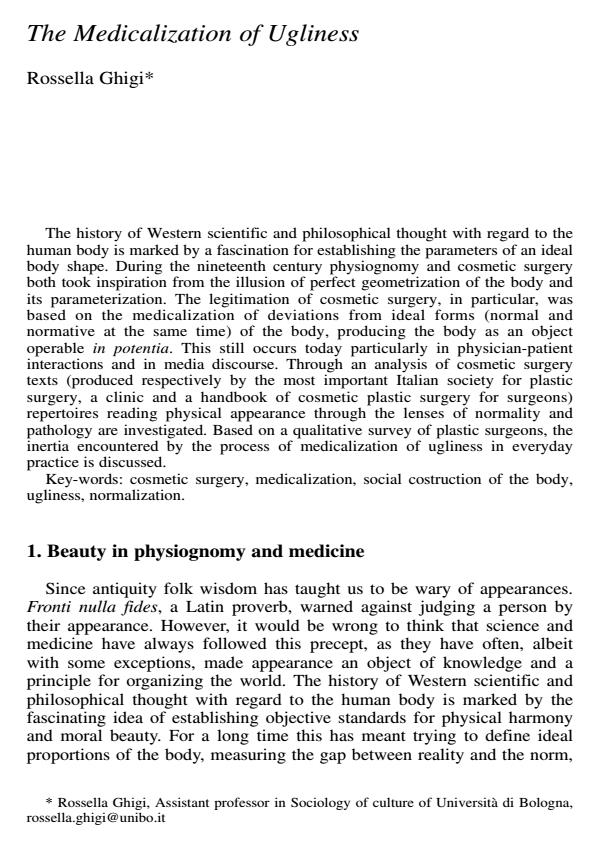The Medicalization of Ugliness
Titolo Rivista SALUTE E SOCIETÀ
Autori/Curatori Rossella Ghigi
Anno di pubblicazione 2009 Fascicolo 2009/EN2
Lingua Inglese Numero pagine 11 P. 67-77 Dimensione file 76 KB
DOI 10.3280/SES2009-EN2006
Il DOI è il codice a barre della proprietà intellettuale: per saperne di più
clicca qui
Qui sotto puoi vedere in anteprima la prima pagina di questo articolo.
Se questo articolo ti interessa, lo puoi acquistare (e scaricare in formato pdf) seguendo le facili indicazioni per acquistare il download credit. Acquista Download Credits per scaricare questo Articolo in formato PDF

FrancoAngeli è membro della Publishers International Linking Association, Inc (PILA)associazione indipendente e non profit per facilitare (attraverso i servizi tecnologici implementati da CrossRef.org) l’accesso degli studiosi ai contenuti digitali nelle pubblicazioni professionali e scientifiche
The Medicalization of Ugliness - The history of Western scientific and philosophical thought with regard to the human body is marked by a fascination for establishing the parameters of an ideal body shape. During the nineteenth century physiognomy and cosmetic surgery both took inspiration from the illusion of perfect geometrization of the body and its parameterization. The legitimation of cosmetic surgery, in particular, was based on the medicalization of deviations from ideal forms (normal and normative at the same time) of the body, producing the body as an object operable in potentia. This still occurs today particularly in physician-patient interactions and in media discourse. Through an analysis of cosmetic surgery texts (produced respectively by the most important Italian society for plastic surgery, a clinic and a handbook of cosmetic plastic surgery for surgeons) repertoires reading physical appearance through the lenses of normality and pathology are investigated. Based on a qualitative survey of plastic surgeons, the inertia encountered by the process of medicalization of ugliness in everyday practice is discussed.
Keywords: cosmetic surgery, medicalization, social costruction of the body, ugliness, normalization
Parole chiave: chirurgia estetica, medicalizzazione, costruzione sociale del corpo, bruttezza, normalizzazione
- Pathologizing Ugliness: A Conceptual Analysis of the Naturalist and Normativist Claims in “Aesthetic Pathology” Yves Saint James Aquino, in The Journal of Medicine and Philosophy: A Forum for Bioethics and Philosophy of Medicine /2022 pp.735
DOI: 10.1093/jmp/jhac039 - Aesthetic Injustice Bjørn Hofmann, in Journal of Business Ethics /2024 pp.217
DOI: 10.1007/s10551-023-05401-4
Rossella Ghigi, The Medicalization of Ugliness in "SALUTE E SOCIETÀ" EN2/2009, pp 67-77, DOI: 10.3280/SES2009-EN2006